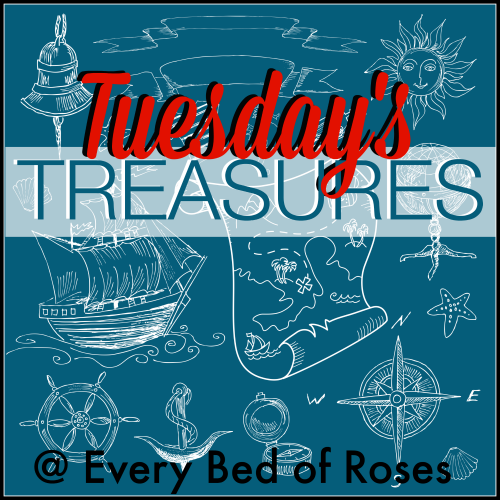Reading schemes are not a subject on which I am a specialist of any sort. However, I thought that a post about reading schemes from a home educating mother in the trenches might be useful for others.
This post isn't for you if your child learned to read aged three just from having books read to them. Yipee! You might not need a reading scheme but for the rest of us, a reading scheme is part of teaching a child to read.
My older children were taught to read at school before the days of synthetic phonics, using schemes which used a mixture of techniques. I was taught to read, before I went to school, by my Mother using Peter and Jane, an old look and say scheme. There were some phonics taught in my reception class which I found rather boring as I could already read.
Fast forward, and I became a home educating mother. I thought that I ought to teach my children using synthetic phonics-it seemed the right thing to do. This post is the product of the last three years. I am using reading programmes with my younger two children.
Jolly Phonics
This was our first scheme and is used in some UK schools. We started off with the teacher's handbook and have gradually added more components. We currently use this plus the workbooks, readers, Finger Phonics books and large wall sized posters.
Many UK home educators use this scheme.
We found that this worked well for single letter phonemes but less well for digraphs and more complex vowel sounds. For my youngest, we have used Finger Phonics extensively for digraphs and this has been helpful. For the child who needs a fair amount of practice, there just wasn't enough. We have also needed to add additional readers as the packs of 18 per level have been insufficient.
I still use this scheme alongside others for my youngest.
Pluses
- Easy to obtain
- Well known
- Many use this successfully
- Multi-sensory
Minuses
- Not sufficient practice for the struggling child.
- Jolly Grammar (the books which follow Jolly Phonics) have spelling lists which are particularly difficult for struggling readers as they have a mixture of words rather than practicing one rule.
- Sometimes can be difficult to put together the components in a logical way.
Letters and Sounds
This is the name of the UK Government scheme, which like much other information has now disappeared from the Government website. I have a paper copy of this scheme which is quite regimented but has helpful ideas particularly for games. However, there is a helpful website, called Letters and Sounds which has free resources and games for use for each level of the scheme. I use this scheme alongside Jolly Phonics for my youngest although I ignore the school, one-size fits all timetable.
Pluses
- Free
- Many sheets of words to allow practice
- Games
Minuses
- Prescriptive timetable although as a home educator I ignore this!
- No readers
Hooked on Phonics
This is an American scheme but we have the UK version. I bought years 1 and 2 second hand for a tiny price and this has been worth its weight in gold. Hooked on Phonics comes as a boxed set containing a CD, cards and keyrings, reading books, a few flash cards for common irregular words, an A4 sized book with lists of words, a progress poster and stickers. We didn't really use the CDs.
There is a Reception box but I haven't seen this.
The cards go over digraphs. Each card has the digraph at the top, a guide to how the sound is said and then an example word. The cards have different digraphs on each side but only one side is used at a time. We went over the cards daily, followed by the workbook and then reader or reading selection from the workbook. The word lists in the workbook demonstrate the digraphs learned on the cards. There is plenty of practice and no nonsense words. We saw encouraging results with this. Looking on the internet, we don't have the most up to date version.
Pluses
- works through digraphs
- provides plenty of practice
- sticker chart was tremendously popular
Minuses
- despite using the UK version, the content was rather US based with baseball being a popular subject for the readers.
- Ideally would have another more advanced level.
- no writing involved.
Phonological Awareness Training
This is a remedial programme and works on teaching the endings of words. One ending is taught per week and one reviewed. The idea is that children who struggle with endings particularly where there is a silent "magic" e learn endings such as -in and -ine completely separately. The child has a sheet with pictures and has to complete this.
The next day, they carry out a similar exercise with the ending but no pictures. This stage can be repeated if necessary. On the next day, the child reads the words and on the last day writes a short phrase containing the word.
We found this programme too slow which was, in many ways, an encouragement. This may possibly have been a placement issue.
Pluses:
- Loads of repetition.
- A different way round the magic "e" problem!
Minuses:
- Placement isn't easy.
- Very slow which probably can be a plus or a minus depending on your child.
Logic of English: Essentials
This is a very thorough programme that I reviewed recently. I was very impressed by Logic of English but it went too fast with several new phonograms per lesson. I suspect that it may be a great system to revisit when spelling is the focus rather than reading. Logic of English also produces a Foundations series which may have been a better fit for us.
Readers are being introduced.
Pluses:
- Many games to play using the phonogram cards and suggestions for spelling games.
- A most thorough programme which also includes grammar.
- I learnt far more from Logic of English than most of the other courses we have used.
Minuses:
- Expensive
- US English although some of the differences are noted.
- Best used for children who are at least eight and have some reading ability.
- Requires up to 90 minutes adult time per day.
Rod and Staff Reading books and Reading and Phonics workbooks
This scheme is produced by the Mennonite publishers Rod and Staff. The Readers have Bible stories and poems. Mennonite theology comes through very clearly. Both the Reading and Phonics workbooks have a double page spread for each lesson. This is the scheme that I am currently using with Younger Daughter. We found this a suitable place to start after the end of Hooked on Phonics as it carried on the phonic work plus lists of proper words which illustrate a rule.
Pluses:
- These books work slowly and steadily.
- Sight words are included.
- The font is large and clear.
- The readers have a few illustrations but they don't give clues as to the text.
- Relatively inexpensive and can be obtained in the UK.
Minuses:
- Occasionally the instructions in the workbook can be unclear.
- The illustrations show rather old fashioned looking children.
Reading Eggs
Reading Eggs is an on-line, fun reading programme which uses synthetic phonics. It is easy to use alongside other such schemes. We have used this for three years now alongside other programmes. The children haven't tired of this although I think we use it less now. The scheme includes lessons with interactive activities, spelling and later reading comprehension. I know that some people say this can be used alone. I'm not convinced but it is a great adjunct.
Pluses:
- Attractive presentation.
- Loved by children.
- Doesn't require much parent input. I have had to help "stuck" children and a younger child who struggled with the mouse initially.
- 40% discount for home educators and sibling discounts.
- Possible to re-do lessons as many times as needed.
Minuses:
- It is possibly to get through levels of the reading lessons with seemingly poor ability to read at that level.
Other home educators have recommended these schemes.
I have looked at these but not used them.
The Butterfly book by Irina Tyk, published by Civitas. This is a book written by a private school head teacher using the scheme she devised for her school. Reading and writing are closely linked and this appears straightforward to use.
The Ordinary Parent's Guide to Teaching Reading by Jessie Wise and Sara Buffington. This book, from the US, uses a phonic approach and has a reassuring title. A friend lent this to me to peruse. Whilst I liked the simplicity of this book, it is a book to use from the start. It would be difficult to jump in half way.
I can't leave out the way that my Mother taught me to read and which, whilst despised, has been used for many others. Like many others, I was taught with the Look and Say, Peter and Jane books. Sometimes, I wonder whether my journey through teaching reading would have been easier with these books!
What do you use to teach your children to read? Are you pleased with the scheme?

If you enjoyed this post you may like to follow Delivering Grace by Google Friend Connect, G+,Facebook, Pinterest or e-mail.

































